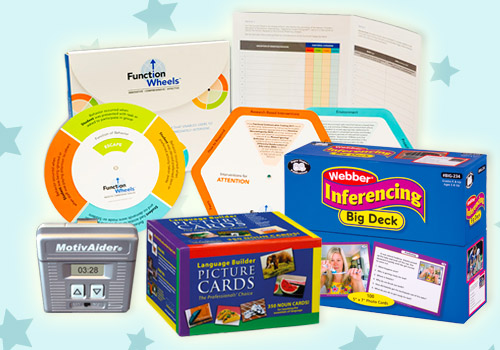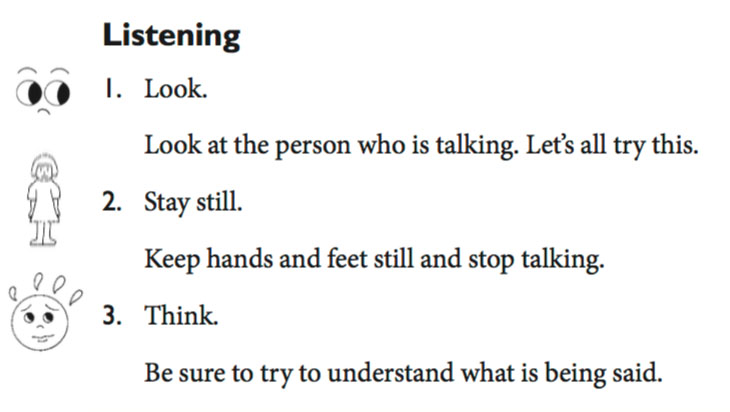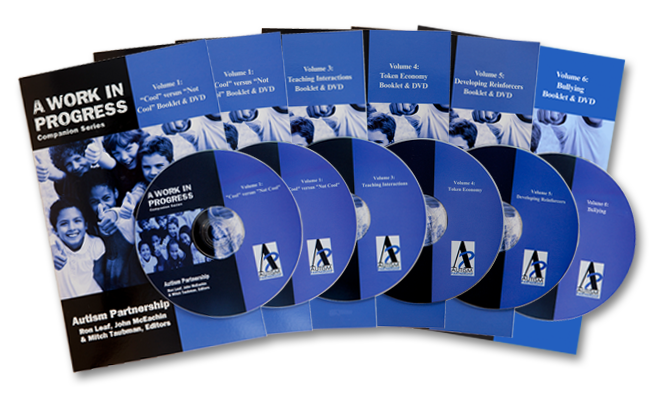This month’s featured article from the Association for Science in Autism Treatment (ASAT) is by Executive Director David Celiberti, PhD, BCBA-D and Denise Lorelli, MS on the abundance of so-called “therapies” available for children with autism, why some fall trap to these “therapies,” and how to assess what therapy is right, and most importantly, effective in the long run. To learn more about ASAT, please visit their website at www.asatonline.org. You can also sign up for ASAT’s free newsletter, Science in Autism Treatment, and like them on Facebook!
Underwater Basket Weaving Therapy for Autism: Don’t Laugh! It Could Happen…
by David Celiberti, PhD, BCBA-D and Denise Lorelli, MS
 Yes, sadly it can happen. With 400+ purported treatments for autism, there is no shortage of such whose name begins with an activity, substance, or favorite pastime and ends in the word “therapy.” A cursory internet search would reveal such “therapies” as music therapy, art therapy, play therapy, sand therapy, dolphin therapy, horseback riding therapy, bleach therapy, vitamin therapy, chelation therapy, and helminth worm therapy joining the list of the more established habilitative therapies such as physical therapy, occupational therapy, and speech-language therapy (this is by no means an exhaustive list of the array of “therapies” that are marketed to consumers). Touted therapies can involve all sorts of things. I recall sitting on a panel at Nova University in the late ‘90s with another provider boasting the benefits of llamas and lizards as well.
Yes, sadly it can happen. With 400+ purported treatments for autism, there is no shortage of such whose name begins with an activity, substance, or favorite pastime and ends in the word “therapy.” A cursory internet search would reveal such “therapies” as music therapy, art therapy, play therapy, sand therapy, dolphin therapy, horseback riding therapy, bleach therapy, vitamin therapy, chelation therapy, and helminth worm therapy joining the list of the more established habilitative therapies such as physical therapy, occupational therapy, and speech-language therapy (this is by no means an exhaustive list of the array of “therapies” that are marketed to consumers). Touted therapies can involve all sorts of things. I recall sitting on a panel at Nova University in the late ‘90s with another provider boasting the benefits of llamas and lizards as well.
What concerns us are the assumptions – made by consumers and providers alike – that promoted “therapies” have legitimate therapeutic value, when, in fact, there is often little-to-no scientific evidence to support them. Some might rightfully say that many of these touted methods are “quackery” without such evidence. The focus on such unproven methods or “therapies” may result in financial hardship and caregiver exhaustion, further exacerbating the stress levels of participating families. What is most alarming is that these “therapies” may be detrimental because they may separate individuals with autism from interventions that have a demonstrated efficacy, thus delaying the time of introduction of effective therapy.
This concern is echoed by the American Academy of Pediatrics. In their guidelines focusing on the management of autism spectrum disorders, they state: “Unfortunately, families are often exposed to unsubstantiated, pseudoscientific theories and related clinical practices that are, at best, ineffective and, at worst, compete with validated treatments or lead to physical, emotional, or financial harm. Time, effort, and financial re-sources expended on ineffective therapies can create an additional burden on families” (p. 1174).
If a child diagnosed with cancer were prescribed chemotherapy, there is a reasonable expectation that chemotherapy would treat or ameliorate the child’s cancer. Parents of individuals with autism have that hope as well when their children are provided with various therapies. While this hope is understandable, it is often placed in a “therapy” for which there is an absence of any legitimate therapeutic value. We hope the following will help both providers and consumers become more careful in how they discuss, present, and participate in various “therapies.”
SOME FAULTY ASSUMPTIONS REGARDING “THERAPIES”
1. Anything ending in the word “therapy” must have therapeutic value. The word “therapy” is a powerful word and clearly overused; therefore, it would be helpful to begin with a definition. Let’s take a moment and think about this definition:
Merriam-Webster
Therapy: noun \ˈther-ə-pē\ “a remedy, treatment, cure, healing, method of healing, or remedial treatment.”
When a “therapy” provider or proponent uses the word “therapy,” he/she is really saying: “Come to me…I will improve/treat/cure your child’s autism.” The onus is on the provider/proponent to be able to document that the “therapy” has therapeutic value, in that it treats autism in observable and measurable ways or builds valuable skills that replace core deficits.
2. Providers of said “therapy” are actually therapists. It is not unreasonable for a parent or consumer to assume that the providers of particular “therapies” are bona fide therapists. It is also reasonable for a parent to believe that someone referring to him/herself as a therapist will indeed help the child. However, simply put, if an experience is not a therapy, then the provider is not a therapist. He or she may be benevolent and caring, but not a therapist.
Some disciplines are well established and have codified certification or licensed requirements, ethical codes, and practice guidelines (e.g., psychology, speech-language pathology, occupational therapy). Consumers would know this, as “therapy” providers will hold licenses or certifications. Notwithstanding, consumers can look to see if the provider has the credentials to carry out a particular therapy, and these credentials can be independently verified (please see https://www.bacb.com/index.php?page=100155 as an example). A chief distinction is that licenses are mandatory and certifications are voluntary. In the case of licensure, state governments legislate and regulate the practice of that discipline. It cannot be over-stated that just because a discipline has certified or licensed providers it does not necessarily mean that those providers offer a therapy that works for individuals with autism. This segues into the third assumption.
3. All “therapies,” by definition, follow an established protocol grounded in research and collectively defined best practices. Let’s revisit our chemotherapy example. Chemotherapy protocols have a basis in published research in medical journals and are similarly applied across oncologists. In other words, two different oncologists are likely to follow similar protocols and precise treatments with a patient that presents with similar symptoms and blood work findings. This is not the case with many autism treatments. Most therapies lack scientific support altogether and are often carried out in widely disparate ways across providers often lacking “treatment integrity.”
4. If “XYZ therapy” is beneficial for a particular condition, it would benefit individuals with autism as well. Sadly, this kind of overgeneralization has been observed and parents of children with autism are often misled. Suppose underwater basket weaving was demonstrated through published research to improve lung capacity. Touting the benefits of this as a treatment for autism would clearly be a stretch. Therapeutic value in autism must focus on ameliorating core symptoms and deficits associated with autism such as social challenges, improving communication skills, and reducing or eliminating the behavioral challenges associated with autism.
Continue reading →
 Programs are presented in a format that supports data collection and ease of use. Clear teaching instructions detail the Teaching Procedure, Discriminative Stimulus, and the Materials needed for each lesson or activity. Each standard also list several targets that demonstrate the steps and goalposts needed for mastery.
Programs are presented in a format that supports data collection and ease of use. Clear teaching instructions detail the Teaching Procedure, Discriminative Stimulus, and the Materials needed for each lesson or activity. Each standard also list several targets that demonstrate the steps and goalposts needed for mastery.

 overing 6 different topics –
overing 6 different topics – 




 Yes, sadly it can happen. With 400+ purported treatments for autism, there is no shortage of such whose name begins with an activity, substance, or favorite pastime and ends in the word “therapy.” A cursory internet search would reveal such “therapies” as music therapy, art therapy, play therapy, sand therapy, dolphin therapy, horseback riding therapy, bleach therapy, vitamin therapy, chelation therapy, and helminth worm therapy joining the list of the more established habilitative therapies such as physical therapy, occupational therapy, and speech-language therapy (this is by no means an exhaustive list of the array of “therapies” that are marketed to consumers). Touted therapies can involve all sorts of things. I recall sitting on a panel at Nova University in the late ‘90s with another provider boasting the benefits of llamas and lizards as well.
Yes, sadly it can happen. With 400+ purported treatments for autism, there is no shortage of such whose name begins with an activity, substance, or favorite pastime and ends in the word “therapy.” A cursory internet search would reveal such “therapies” as music therapy, art therapy, play therapy, sand therapy, dolphin therapy, horseback riding therapy, bleach therapy, vitamin therapy, chelation therapy, and helminth worm therapy joining the list of the more established habilitative therapies such as physical therapy, occupational therapy, and speech-language therapy (this is by no means an exhaustive list of the array of “therapies” that are marketed to consumers). Touted therapies can involve all sorts of things. I recall sitting on a panel at Nova University in the late ‘90s with another provider boasting the benefits of llamas and lizards as well.

